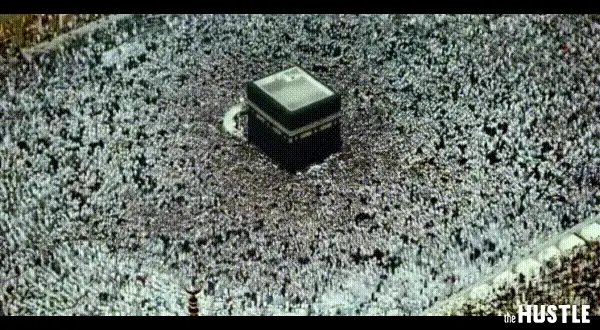The hajj — an annual religious pilgrimage to Mecca undertaken by all Muslims with healthy bodies and healthy wallets — is underway right now in Saudi Arabia.

In the past, the volume of pilgrims has strained local infrastructure and even led to death (2.2k people died in a 2015 crowd stampede).
So, with more than 2m people expected this year, Saudi Arabia has invested in high tech solutions to facilitate the trek — and, in the process, built a $12B industry.
For Muslims, the hajj can be a huge expense…
Since traveling to Islam’s holiest city at least once in a lifetime is a religious obligation, Hajj-ers shell out big bucks to make the trip.
According to Quartz, Muslims in India routinely pay ⅓ of their annual salary to make the trip, and Muslims in America often end up paying at least $10k.
But the number of current pilgrims to the hajj is capped by geography: Not all Muslims who want to participate in hajj can safely journey together…
So the Kingdom has a financial interest in expanding the hajj
In some countries, Muslims enter lotteries for a chance to take their holy pilgrimage. But at the current rate, it would take 580 years for every Muslim to take their hajj.
The Saudi Arabian government, however, plans to expand the hajj from its current attendance of 2m to 30m by 2030.
Which will require increasing the current volume of of hajj-ers by 15x, by making the whole process more convenient for the trekkers.
The Kingdom’s getting smart to handle more hajj-ers
In order to handle the growing volume of people, the Kingdom plans to build new infrastructure and systems to help manage the crowds.
Already, the Saudi government has built a high-speed rail link between Mecca and Medina, launched a pilot program that equips pilgrims with wearable tech to help service providers manage transportation, and set up 350 sensors across 6 stations to monitor crowd movements.

